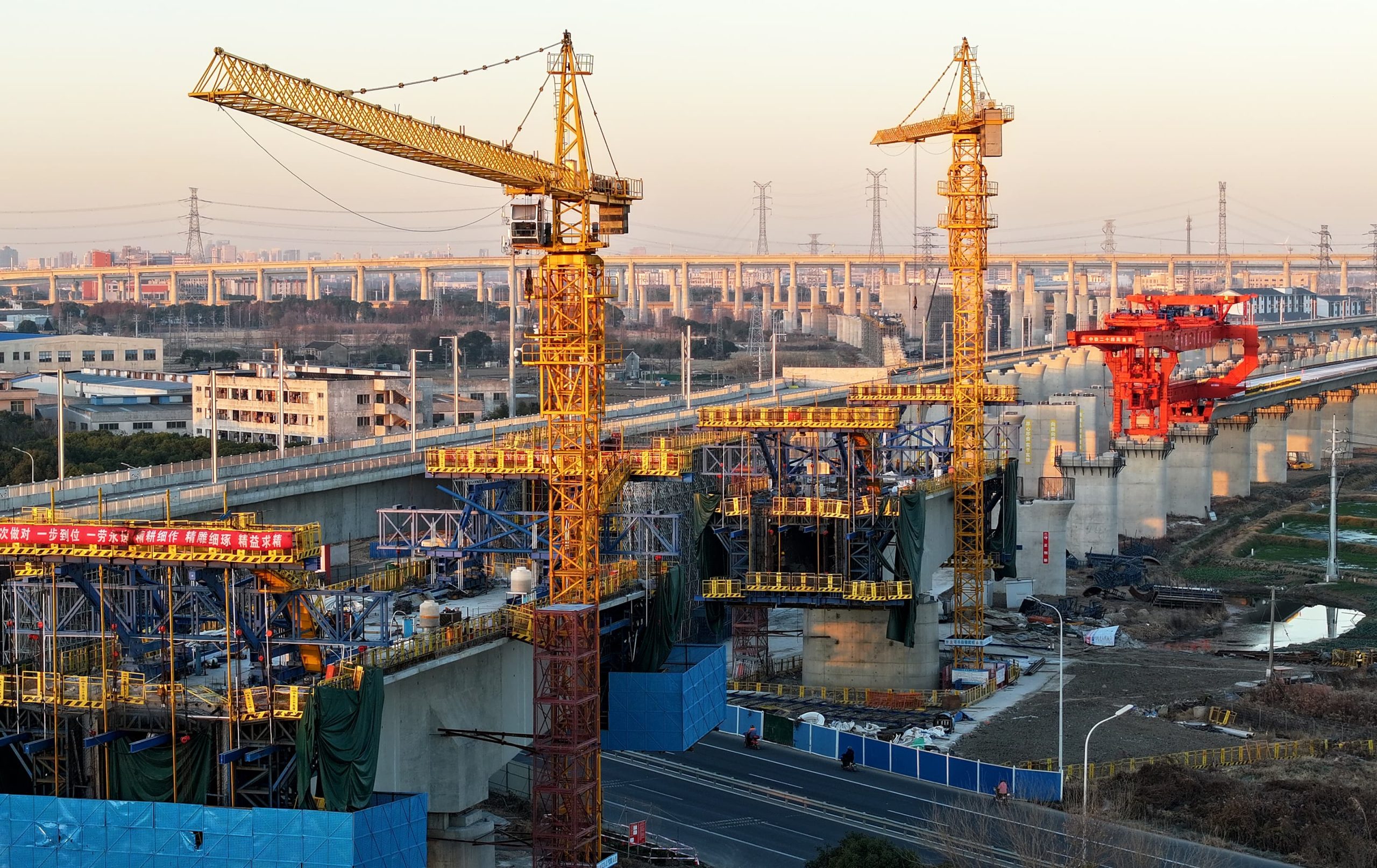China’s economic activity accelerated more than expected in the final three months of 2024 as stimulus measures kicked in, allowing Beijing to meet its annual growth target.
China’s gross domestic product expanded by 5.4% in the fourth quarter, beating Reuters-polled economists’ estimates of a 5.0% growth, and outpacing the 4.6% in the third quarter, 4.7% in the second quarter, 5.3% in the first quarter.
That last-quarter sprint helped lift China’s full-year GDP growth to 5.0% in 2024, according to China’s National Bureau of Statistics on Friday, in line with the official target of “around 5%.”
“The shift of policy stance in September last year helped the economy to stabilize in Q4, but it requires large and persistent policy stimulus to boost economic momentum and sustain the recovery,” Zhiwei Zhang, president and chief economist, Pinpoint Asset Management, said in a note.
Last year’s growth was slower compared with the 5.4% rise in 2023, post-pandemic. As part of an annual revision to preliminary figures, the statistics bureau in late December revised the 2023 GDP growth to 7.4%, according to a CNBC calculation of the official data.
In December, retail sales jumped 3.7% from a year earlier, exceeding Reuters’ forecast of 3.5%. Industrial output expanded 6.2% from a year earlier, versus expectations of 5.4%, underscoring China’s imbalance between domestic production and weak demand.
The full-year fixed asset investment rose 3.2% in 2024, shy of the projected 3.3% increase in a Reuters poll, as real estate investment drag steepened to a 10.6% drop, compared with the January to November period.
Kang Yi, head of the statistics bureau, said real estate was recovering. The sector’s drag on economic growth had narrowed, he said, while the role of new growth drivers, such as in digital tech, was expanding.
The urban unemployment rate ticked higher to 5.1% in December from 5.0% in the prior month.
Disposable income for urban residents grew by 4.4%, slower than the overall economic growth, while that of rural residents increased by 6.3% in 2024.
Mainland China’s blue-chip CSI 300 index reversed course to edge up 0.31%, following the upbeat data. Chinese offshore yuan strengthened slightly to 7.3398 per U.S. dollar, while the benchmark 10-year government bond yield dropped 2 basis points to 1.638, according to the LSEG data.
“The stock market’s moderate response to today’s data release reflects investor caution as they await further policy clarity after the Chinese New Year,” said Chaoping Zhu, Shanghai-based global market strategist at J.P. Morgan asset management.
“There is room for domestic consumers and business confidence to rebound with the right policies in place,” Zhu added.
Growth, demographic concerns
However, some economists made the case that China’s economic recovery may not be as rosy as the headline figures suggest.
Despite the accelerated growth in real GDP figures, China’s economy saw deflation persisting for the seventh straight quarter, Larry Hu, chief China economist at Macquarie said in a note.
Hu remained skeptical of China’s ability to achieve higher inflation. “We don’t bet against policymakers’ will and ability to deliver 5% real GDP growth in 2025, but can they achieve higher inflation? It will largely depend on the fiscal and housing stimulus, which is key to boosting domestic demand.”
China’s consumer inflation has remained barely above zero, while wholesale prices fell for a 27th consecutive month in December, official data showed last week.
Statistics bureau head Kang reiterated Friday Beijing’s priority this year was to boost consumption, while acknowledging that consumers’ ability to spend was still weak.
This year, the “unfavorable impact of external factors may deepen,” he flagged.
Friday’s data comes just days before Donald Trump is set to be inaugurated as the next U.S. president on Jan. 20. Trump has said that soon after taking office, he plans to impose additional tariffs of at least 10% on Chinese goods. He has also appointed some China hawks to key cabinet posts.
The growth momentum, buoyed by a surge in exports, may be sustained into the first quarter this year, said Erica Tay, director of macro research at Maybank. But it is likely to weigh on GDP growth in the second half-year, “regardless of Trump’s tariffs,” given that foreign importers have amassed ample stockpiles, she added.
The data released Friday indicated that “domestic growth engines remain soft as retail sales growth responded marginally to trade-in subsidies,” Tay said, pointing to sluggish consumer spending.
The national population declined to 1.408 billion in 2024, dropping by 1.39 million from 2023, according to the statistics bureau. It had declined by 2.08 million people in 2023 from the prior year.
The fall in population, despite a rebound in birth rates, reflects a deepening demographic crisis, said Tianchen Xu, senior economist at Economic Intelligence Unit, stressing that the death rate in China had ticked up to 7.76% last year from 7.1% before the pandemic.
Stimulus boost
China has been striving to boost economic growth and has taken several measures towards this end, as a real estate slump and uncertainty about future income has continued to weigh down consumer spending and business confidence, adding to deflation concerns.
Since late September, Chinese authorities have called for halting the real estate decline, cut interest rates and announced a five-year fiscal package worth 10 trillion yuan ($1.4 trillion) to ease local governments’ financing crisis. Beijing has also expanded a program for consumers to trade-in used cars and home appliances, and buy new ones at a discount.
“They are betting on a substantial infusion of policy stimulus and reforms to turbo boost the country’s economy in 2025, invigorating domestic demand and warding off disinflationary loom,” said Bruce Pang, distinguished senior research fellow at the National Institution for Finance and Development.
Top leaders have pledged “proactive” fiscal measures and a “moderately loose” monetary policy stance for the current year. Some analysts expect stimulus might start to take effect this year, but it will take longer to see a significant impact.
The government is expected to reveal the official growth targets for 2025 and additional stimulus measures at the annual parliamentary meetings in March. Economists expect Beijing to keep its GDP growth target for 2025 at around 5%, if not slightly lower.
International: Top News And Analysis
Read the full article <a href="Read More” target=”_blank”>here.


